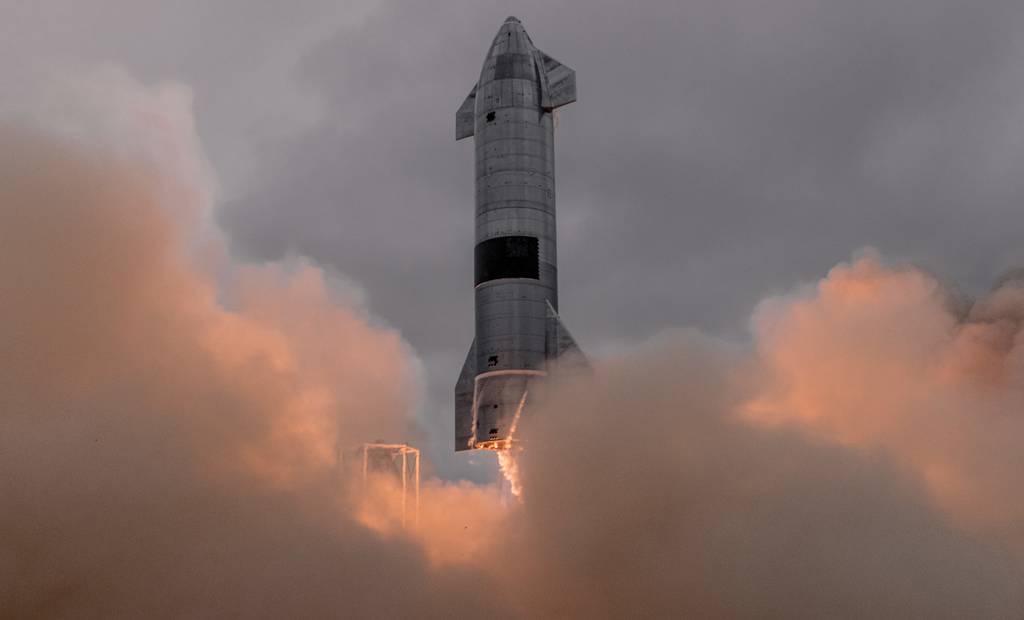WASHINGTON — The Air Force Research Laboratory is using a new five-year contract with SpaceX to better understand the constraints and viability of using space launch vehicles for point-to-point cargo transport.
The $102 million contract, which AFRL awarded Tuesday under its Rocket Cargo program, will give the lab more concrete data about how reusable launch vehicles could be used in future cargo missions and how the commercial capability could be adapted for use by the Department of Defense. The intent, according to program manager Greg Spanjers, is to ensure the government is ready to leverage the commercial service once industry has matured the capability.
The U.S. Air Force in its fiscal 2022 budget request designated the program one of AFRL’s Vanguard efforts, boosting its profile as a potentially transformational technology. Spanjers told C4ISRNET in an email this week the program represents “a big-bet [science and technology] investment,” noting its designation as a Vanguard effort is a recognition it could offer a “game-changing capability.”
To date, AFRL has awarded several Rocket Cargo contracts for analytics, landing material research, wind tunnel sensors and command-and-control systems development, but this week’s award to SpaceX is the first deal with a launch vehicle provider. According to Spanjers, the lab is engaged with other launch providers and will consider awarding additional contracts later in the program.
Spanjers said the SpaceX work is focused in four areas: collecting data from commercial orbital launches and landings; exploring cargo bay designs compatible with U.S. Transportation Command containers and support rapid loading and unloading; researching landing systems that can operate on a variety of terrain; and demonstrating the heavy cargo launch and landing process.
The emphasis on landing options and interoperability with TRANSCOM containers and loading processes is an important element of the project, Spanjers noted, because the department’s vision for how the point-to-point capability could be used is broader than just the commercial business case. While companies are primarily interested in delivering cargo to and from established sites, the military wants to deliver supplies and humanitarian aid to locations that may not have spaceports.
“We are therefore exploring a wider range of novel trajectories to mitigate overflight issues, exploring a broad range of landing options for austere sites, researching human factors when landing near populations and integrating a broader range of cargo, including medical supplies,” he said.
Because AFRL is looking to take advantage of an emerging commercial capability rather than develop its own launcher, the program isn’t dictating a schedule or prescribed milestones, Spanjers said.
“AFRL does not drive this schedule, but rather will collect data when SpaceX flies regular missions,” he said. “The final task is a full-up demonstration of heavy cargo transport capability to another location on Earth. This is similar to AFRL funding and flying research spacecraft, except in this case the cargo returns to Earth.”
As AFRL explores the logistics and enabling technologies through the Rocket Cargo effort, TRANSCOM is also partnering with companies to better understand the capability’s potential. In 2020, the command announced it had signed cooperative research and development agreements (CRADAs) with SpaceX and xArc, a space architecture and engineering company. And last month, Blue Origin signed on with its own CRADA.
Those agreements, while likely informative for AFRL’s work, are separate efforts, which TRANSCOM awarded competitively.
With AFRL as its S&T partner, the Space Force is closely watching the program’s progress — particularly in terms of affordability and viability. Brig. Gen. Jason Cothern, Space Systems Command’s enterprise corps lead, told reporters in June he is interested in the prospect of buying the space cargo transport capability as a commercial service, similar to how the Space Force procures launches today.
Courtney Albon is C4ISRNET’s space and emerging technology reporter. She has covered the U.S. military since 2012, with a focus on the Air Force and Space Force. She has reported on some of the Defense Department’s most significant acquisition, budget and policy challenges.








